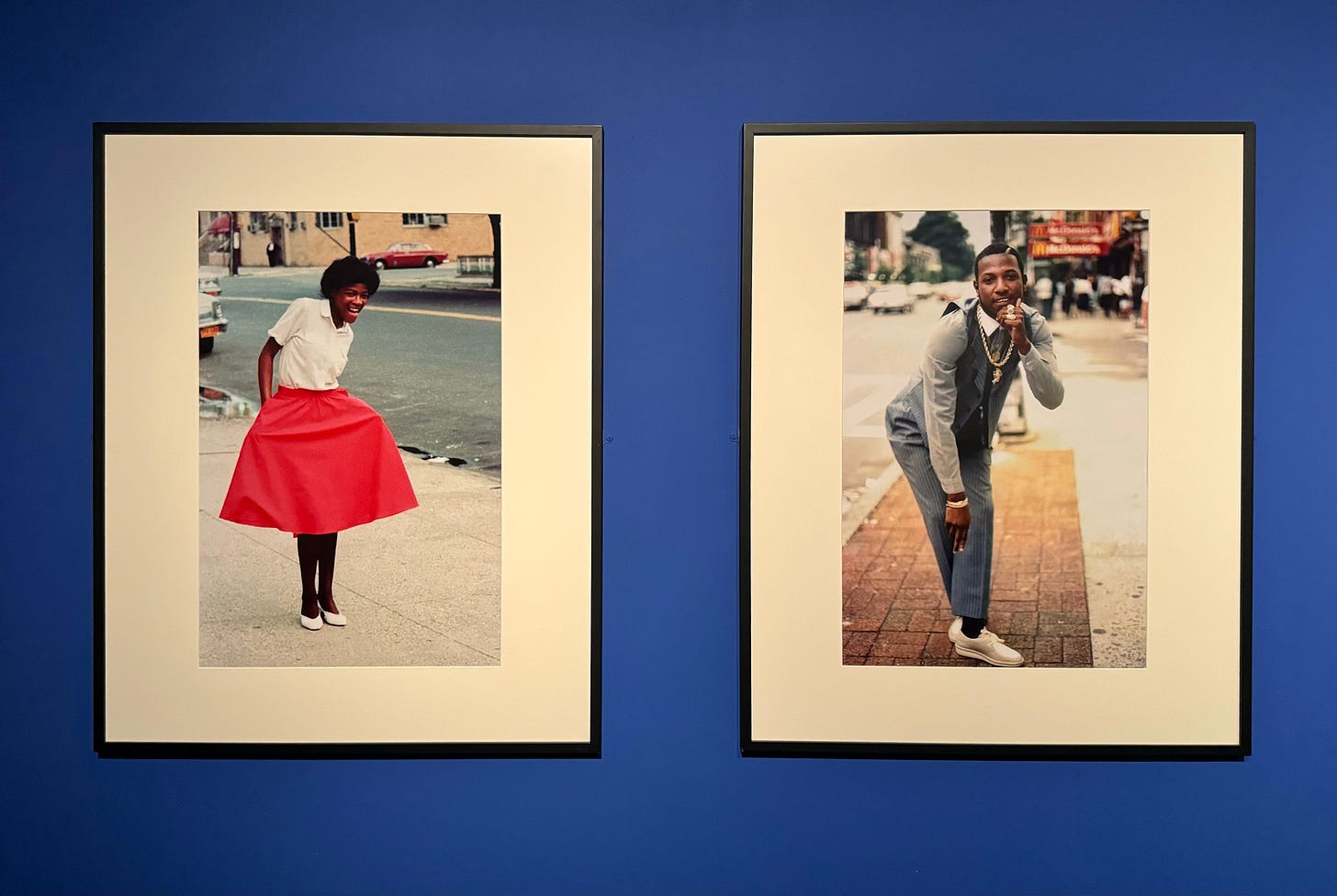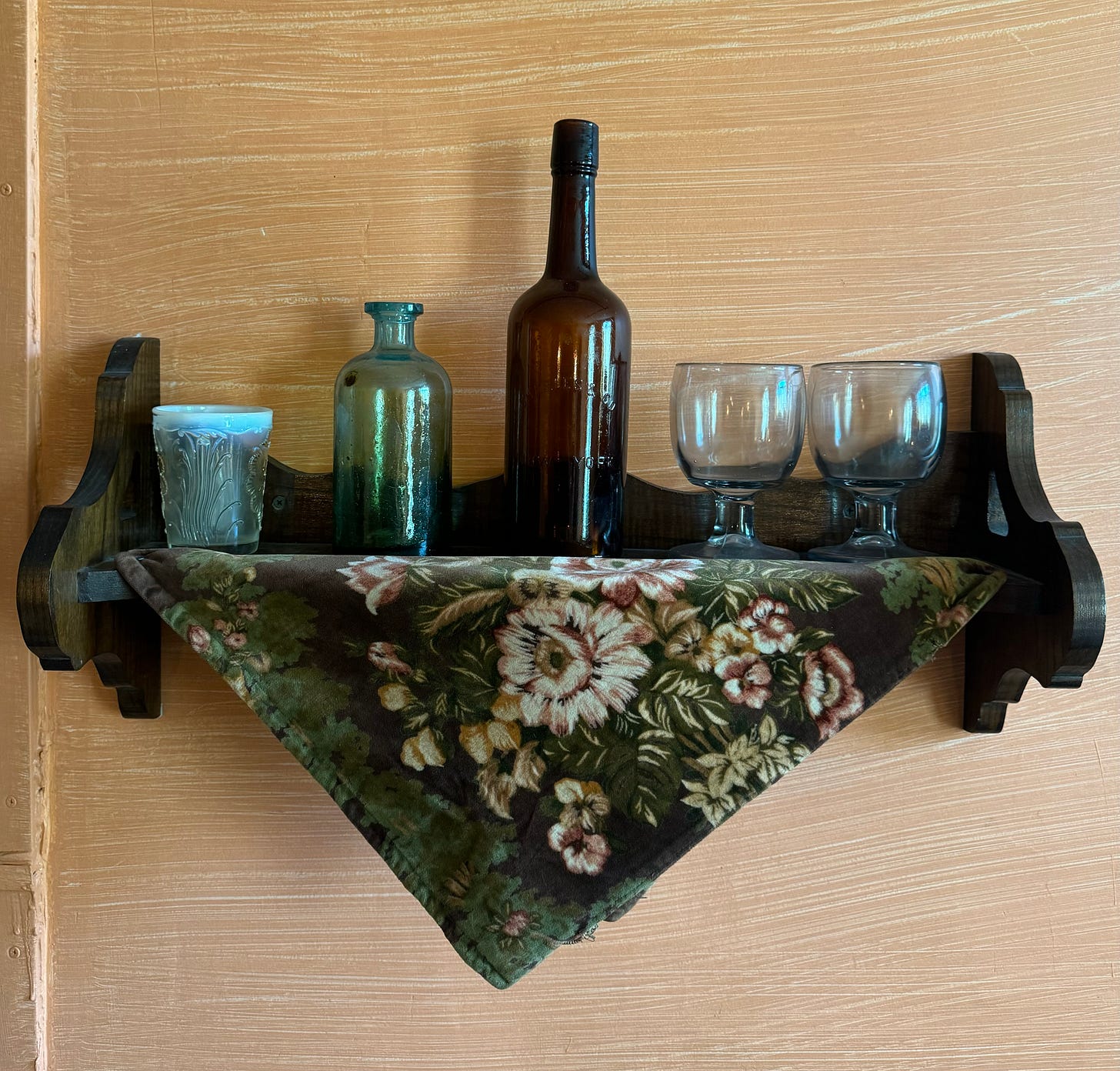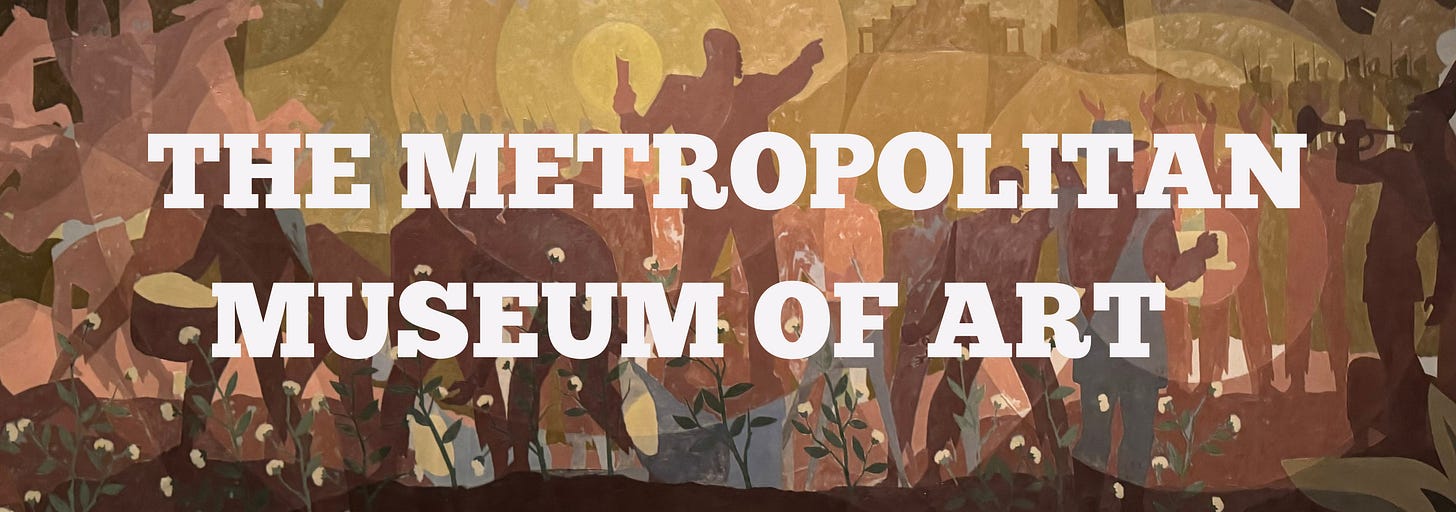NYC 13 Weeks of Adventure: Week 1 - Black Museum Exhibitions
Giants: Art from the Dean Collection of Swizz Beatz and Alicia Keys, A Union of Hope: 1869, and The Harlem Renaissance & Transatlantic Modernism.
Welcome to Love + Travel, a weekly chronicling of adventure for people who aren’t afraid to explore new landscapes within themselves and the world.
My favorite, and most life-changing, experiences often come from stepping out of my comfort zone. Adventure connects us to not only the fullness of self but frequently with others we otherwise wouldn’t have had the pleasure of meeting. With summer's extra hours of sunlight, it's the perfect time to embark on 13 weeks of adventure.
As an ode to the season, this series will highlight compelling experiences that embrace the possiblities summer affords. My hope is these explorations will encourage you to be curious about the offerings in the city, town, and backyard you call home while also serving as a resource should you choose to visit the locations I cite moving forward.
As always, with all my offerings, I aim for this to be an exchange. I hope you share feedback on how you are taking time to create adventures of your own, push the limits of what you think is possible or available, and, in true adventure style, take someone along for the ride.
With that, let’s pop this off with one of my favorite things: museum exhibitions that highlight and celebrate Black culture, history, and achievements.
The Brooklyn Museum Exhibit: Giants: Art from the Dean Collection of Swizz Beatz and Alicia Keys Availability: through July 7th, 2024 General Admission: $25; $17 reduced entry available for first responders, hospital workers, and teachers.
Aside from their decades-long involvement in music, Swizz Beatz and Alicia Keys, have amassed an incredible art catalog, including the largest private collection of Gordon Parks photographs. With a title like “Giants”, I figured there would be an emphasis on the scale of artwork, and while the curators didn’t disappoint, the term also refers to the renown of the legendary artists on display as well as the couple’s links and legacies in support of these masters. Based on the seating areas throughout the gallery it also appears the exhibition was imagined as a space where discussions and large conversations could be had about culture, society and the work.
Upon entry guests are greeted by a handful of portraits featuring the exhibits namesakes including duel portraits by Kehinde Wiley. After meandering past canvases by Jean Michel Basquiat and Ernie Barnes you’ll come upon a trio of stills by Kwame Brathwaite and to the right of the portraits, I found my favorite pieces from the entire showing.
Now ya’ll know I love Jamaica, but it even surprised me that I didn’t wait to see the remaining artwork before declaring Barkley L. Hendricks series of oil on linen landscapes a front runner for my affection. There are so many brilliant artists featured including Nina Chanel Abney, Amy Sherald, Lorna Simpson and Jamel Shabazz.
Word to the wise: The exhibit closes 10 minutes earlier than the museum itself. Give yourself enough time to take in all of the goodness of this display. Don’t be like me and arrive within the hour of closing. Thankfully, as they knew I wouldn’t be able to see much beyond “Giants” with the allotted time, the front desk graciously offered a general admission guest pass to return another day. Enjoy!
Tenement Museum Exhibit: A Union of Hope: 1869 Availability: Permanent Installation General Admission: $30
The deciding factor in why I chose to visit the Tenement Museum was its new permanent exhibit featuring, a Black couple, Joseph and Rachel Moore. As a native New Yorker the story of tenements has largely circled around the structures use as a first home for the newly immigrated. However, the reasons people were drawn to large cities, and by proxy tenements, wasn’t exclusive to a first arrival to the United States. Like many other twenty-somethings, Joseph and Rachel were a young Black family that called a Lower Manhattan tenement, modern-day Soho, home in search of opportunity and a better life from rural upbringings. The “A Union of Hope: 1869” tour sheds light on what the experience of Black New Yorkers would have been like after the Civil War. As a nonprofit cultural institution, the Tenement Museum shares stories that bridge the past and present using census records, city planning documents, and first-person accounts to create a more expansive picture of American society, by telling the story of everyday people.
Phil and I visited on Juneteenth and, along with eight others, met at the museum’s gift shop to check in for the tour. No doubt this is a strategic move to tempt patrons with art work, souvenirs and books on belonging, home, and culture.
Our guide for the day introduced herself as Annie and shared she serves as the president of the organization but relishes the opportunity to get out of her office and walk. We followed her to the actual tenement a few feet down the block, where upon entry, she began by contextualizing the building and time period, narrated the relocations of Joseph and Rachel, and finally allowed us to enter an interpretation of how their tenement would have looked, been used, and the detailed the people they shared it with.
One of the most interesting bits for me was learning that in the spirit of an ultimate rebrand, after the word tenement became associated with poor living conditions, small segmented quarters became known as apartments, coming from the French term for the word “appartement” meaning “a separated place." Other highlights include a refurbished rondel in the entryway and the original staircase banister from 1863.
The Metropolitan Museum of Art Exhibit: The Harlem Renaissance and Transatlantic Modernism Availability: through July 28th, 2024 General Admission: $30; However, pay-what-you-wish tickets are available to purchase for New York State residents, and NY, NJ, and CT students with valid student ID.
Featuring pieces from HBCUs and rarely seen picks from private collections, The Harlem Renaissance and Transatlantic Modernism combines various media sources to capture a comprehensive portrayal of Black life during the time period. The influence of the arts movement is noted and wide spread - the distribution of art and ideas mirrored the expansion of Black resettlement during The Great Migration. Within the gallery, books, photographs, paintings, sculpture, and film are showcased to explore Black centricity in the development of international modern art. The exhibit flows from works of domestic talent to that of international figures that either visited Harlem during the renaissance or drew influence from artists and Black culture during the time period. To close, it returns, once again to the work of Black artists.
Throughout the gallery I noticed there was a considerable amount of portraiture. While it could be a preferred style of the time, I like to think it speaks to the power artists hold. The cementing of Black life as art - something cherished and made to be preserved - is a powerful act of revolution against a national backdrop of being seen as unimportant and disposable. The showing introduced me to the work of Archibald J. Motley Jr. and I love the way his use of shadows and deep, rich colors blurs the lines between subjects. It drew me in, quite literally, as I often stepped closer to examine where one ends and the other begins.
The most compelling part of the entire exhibition to me were viewing unfinished works. I liken it to having an average person run alongside Olympic athletes during a 100m final – the contrast contextualizes the sheer level of talent. To see a mostly blank canvas with a small intricately detailed start, it reminders me how powerful humans are in our ability to transform the ordinary into something absolutely magnificent.
LET ME KNOW
What’s the most memorable museum you’ve visited? Why did it leave such an impression on you?
If you could curate an exhibition on any topic, what would it be about and what kind of items or themes would you include?
Do you prefer museums with historical artifacts, art exhibitions, or interactive displays?










Dali Museum/Dali Paris/Escape Dali Paris - it features a variety of his works from a private collection. It left a great impression because viewing his pieces up close made it obvious that he was obsessed with various aspects of literally every ethnic culture (perhaps that’s why he was determined delusional).
I always tell myself I’m not a museum person but every time I go, I’m leaning in to every moment just like I was here. I have to throw away that narrative as it seems to simply be untrue. I so appreciate the work you put into each of these.